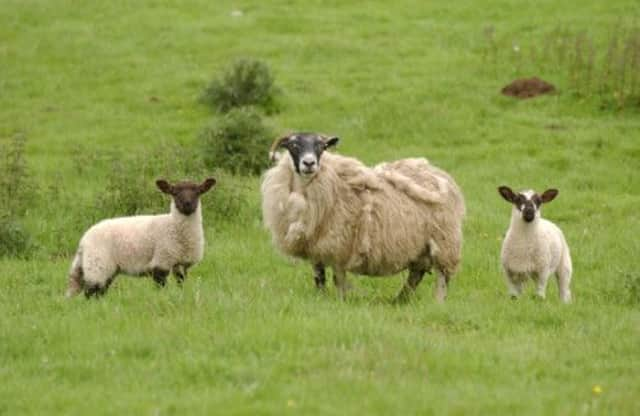Weather takes its toll but QMS sounds upbeat note


Releasing Quality Meat Scotland’s annual publication Cattle and Sheep Enterprise Profitability in Scotland, which covered the 2012 year, the organisation’s chief economist, Stuart Ashworth, had his work cut out to put a positive spin on the results.
However, he highlighted the fact that most of the factors which had resulted in reduced performance had been outwith the control of the farming industry. Chief among these factors was the weather – which had resulted in poor animal performance, higher feed and vet costs and a protracted feeding and housing period.
Advertisement
Hide AdAdvertisement
Hide Ad“On top of this, there were increases in the wear and tear on both infrastructure and staff – with overtime costs up and machinery and buildings often being tested far more than usual,” he wrote.
Seeking out some green shoots of recovery as the industry moved into the 2013 season, he said that, for the sheep sector, it was probable that 2012 marked a temporary downturn in the slow improvement of margins and increase in confidence, which had been under way for the past three or four years.
On the beef side, he was slightly more hesitant – but said there was a chance that the number of heifers currently on-farm might be the very early signs of some increase in breeding stock numbers:
“The reduced heifer kill and more females on the ground do give us some hope that breeding stock numbers might be beginning to move forward – but we’re still very far from putting the bunting out.”
But Ashworth stressed that the figures produced in the booklet still represented an excellent tool for producers to use as a benchmark when looking to improve the productivity of their own enterprises:
“In fact, in several categories the top third of producers reported higher margins in 2012 than they had for the year before, even although the average margin fell in all cases.”
He added that top producers continued to be characterised by showing high physical and technical performance, strong control of costs and the ability to maximise returns from the market place. However, when other business costs often ignored by the industry – such as the value of the labour provided by the farmer and his family, rental costs and a return on capital – were included in the calculation, only one out of the 12 types of cattle and sheep enterprises listed managed to obtain a selling price that was above the costs of production.
Ashworth stated that these figures excluded all support payments other than the coupled beef calf scheme payments:
Advertisement
Hide AdAdvertisement
Hide Ad“And this highlights just how important these support payments remain for sustaining producers and the industry as a whole if we are to maintain critical mass in the sheep and cattle sectors,” he wrote.